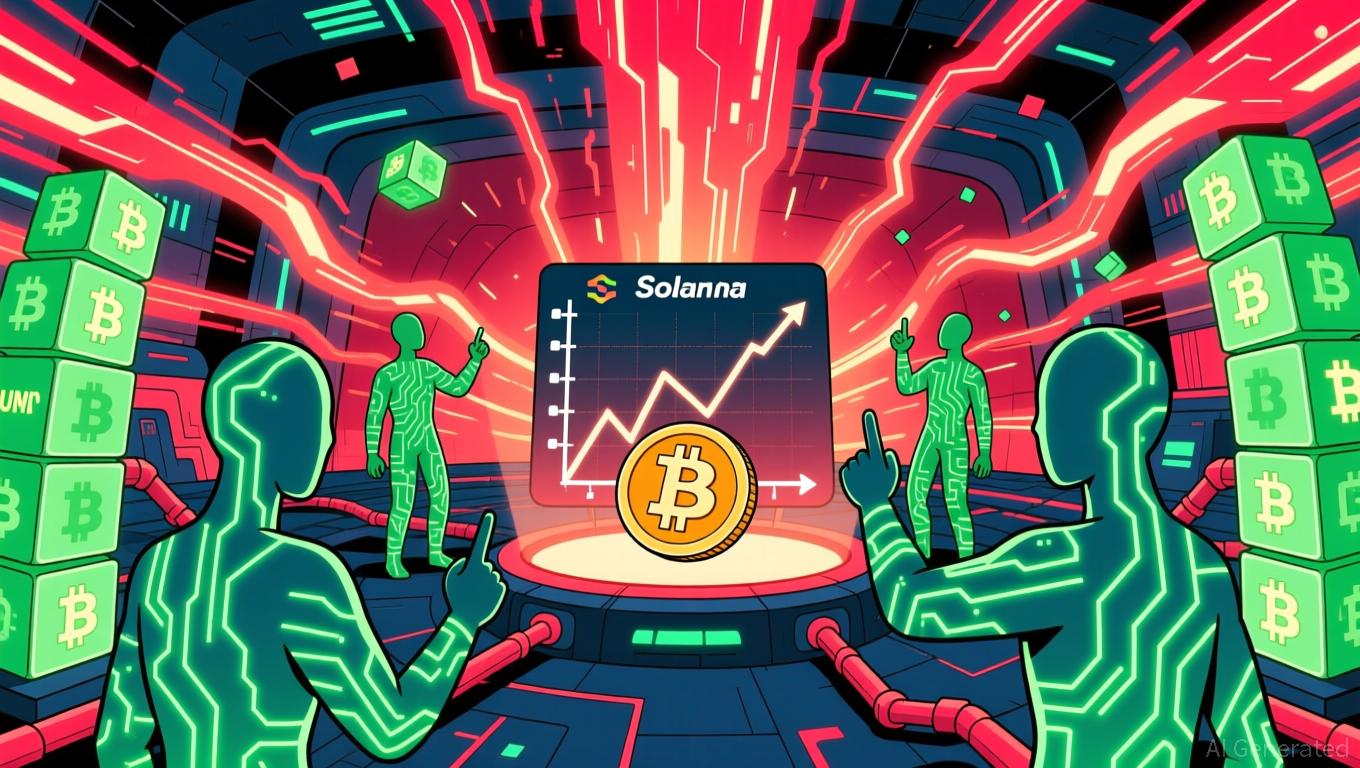"Trump's Strategy in Venezuela: Parallels with Panama and a Critical Confrontation"
- Trump escalates pressure on Venezuela via tariffs and military buildup, including the USS Gerald R Ford deployment, to disrupt Maduro's drug-linked regime. - The Supreme Court's pending tariff ruling risks a $2 trillion financial blow, with Trump warning of "national security catastrophe" if struck down. - Trump hints at reduced India tariffs to strengthen ties, while 58 Latin American nations condemn U.S. force use at a regional summit. - Maduro's regime escalates military mobilization, framing U.S. nav
U.S. President Donald Trump has ramped up pressure on countries that purchase Venezuelan oil, introducing tariffs as part of a larger campaign against President Nicolás Maduro’s government. This initiative, presented as a component of a broader "war on drugs," comes on the heels of a notable military escalation in the Caribbean, which includes sending the USS Gerald R Ford—the largest aircraft carrier in the world—to the area.
The tariffs are directed at nations that help facilitate Venezuelan oil exports, which are a vital source of income for Maduro’s administration, which

In a related diplomatic move, Trump proposed lowering tariffs on India after months of trade disagreements. This announcement coincides with longtime ally Sergio Gor taking up the post of U.S. ambassador to New Delhi. Although Kpler data indicated that India’s imports of Russian oil remained steady in October,
The combination of military and economic tactics has provoked strong responses from Latin American countries. At a regional meeting, 58 out of 60 nations denounced the use of force without specifically naming the U.S., while Venezuela and Nicaragua chose not to participate.
As the confrontation persists, comparisons between the 1989 Panama intervention and the current situation in Venezuela remain at the forefront. While Trump’s advisors are reportedly advocating for a tough stance against Maduro, the practical and political difficulties of such an operation—
Disclaimer: The content of this article solely reflects the author's opinion and does not represent the platform in any capacity. This article is not intended to serve as a reference for making investment decisions.
You may also like
Uniswap News Today: Uniswap's CCA Makes Token Launches More Accessible, Reducing Whale Influence
- Uniswap v4 launches Continuous Clearing Auctions (CCA), a permissionless protocol for transparent, community-driven token launches with Aztec. - CCA divides token sales into blocks settled at market-clearing prices, reducing volatility and sniping while enabling equitable distribution. - The protocol automatically seeds liquidity post-auction and supports privacy via Aztec's ZK Passport, marking a DeFi innovation in fair token distribution. - CCA aims to standardize on-chain price discovery, countering w

Why MUTM’s Approach to DeFi Might Establish New Standards for Liquidity
- Mutuum Finance (MUTM) nears 99% Phase 6 presale allocation ahead of Q4 2025 V1 lending protocol launch on Sepolia testnet. - Project has raised $18.6M through strong retail and institutional participation, positioning it as a rising DeFi contender focused on liquidity and execution speed. - V1 will introduce ETH/USDT lending, mtTokens, and a Liquidator Bot, marking transition from theory to practical DeFi implementation. - Market attention centers on MUTM's $0.05+ token price, transparent roadmap, and Ph

Solana News Update: Solana's DeFi Expansion Poses a Threat to Ethereum's Leading Position as Buybacks Drive Further Development
- Solana's Pump.fun accelerates growth via $173.7M PUMP token buybacks, reducing supply by 10.928%. - Solana's DEX volumes ($5.11B daily) now surpass Ethereum and BNB Chain, driven by 21.5 development activity score. - Ethereum's 67.65% DeFi TVL lead faces pressure from Solana (8.9%) and Tron (25.78% stablecoin share). - Institutional inflows and macroeconomic factors determine Solana's $180 price breakout potential (29% probability). - Pump.fun's sustainability hinges on maintaining user base amid Solana'

Tether’s Approach to Gold: Integrating Blockchain Technology with Precious Metals to Transform Trust
- Tether , issuer of the world's largest stablecoin, has accumulated $8.7B in Swiss gold reserves by 2025, becoming a top private gold holder. - The company restructured reserves to prioritize gold, aligning with central bank trends and tokenizing $1.5B in bullion via XAU₮. - Tether hired HSBC executives and launched a $200M gold treasury venture, vertically integrating into mining and royalty firms. - Its strategy reflects macroeconomic shifts toward gold as an inflation hedge, but faces scrutiny over tra
